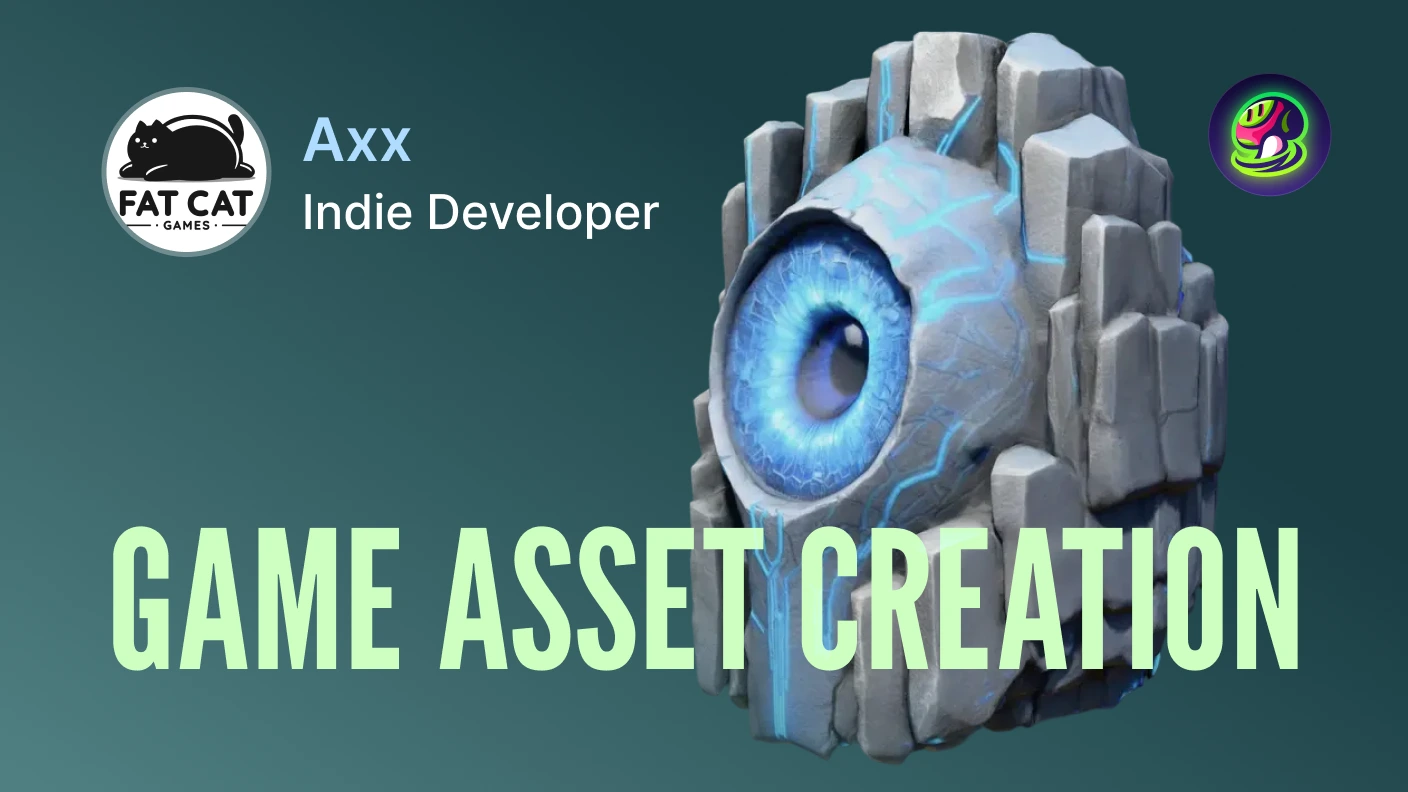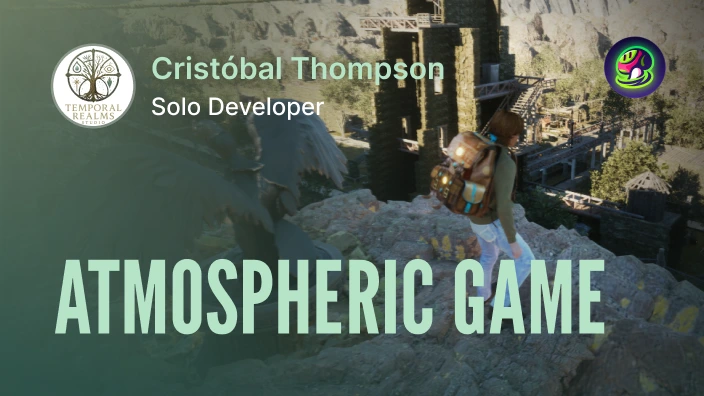From AA Tools Programmer to Solo Indie Dev
Jlemarchand has an unconventional path into game development. After a decade in web development and graphic design, he transitioned into software engineering and later joined DontNod as a Tools Programmer.
"One of the best experiences of my career, and truly one of the best workplaces."
Jlemarchand
Indie Game Developer
When studio closures and market instability made stable opportunities harder to find, Jlemarchand decided to take matters into his own hands. He began developing Navy Island Confidential, a point-and-click adventure with tropical settings and humorous undertones inspired by LucasArts classics like Curse of Monkey Island and Discworld.
"As a solo dev, I enjoy the creative freedom of not having to stick to a predefined formula in terms of story, environments, or characters."
Jlemarchand
Indie Game Developer
This freedom also came with a huge challenge: building an entire game alone.
The Challenge of Building a Game Alone
For Navy Island Confidential, Jlemarchand set out to create everything himself — from environments and music to dialogues, animations, and the entire codebase.
![]()
"The challenges are huge: environments, music, dialogues, voice-overs, characters, animations, and of course the entire codebase."
Jlemarchand
Indie Game Developer
As a solo developer, the scope might appear impossible. But with his dual background in programming and graphics, he believed he could achieve it.
"From the outside, it might look impossible, but thanks to my experience in both graphics and programming, I feel it's achievable."
Jlemarchand
Indie Game Developer
The greatest bottleneck, however, was 3D asset creation. Without a team of artists, generating consistent characters and props in a traditional pipeline would take months. He tried various AI tools, including local 3D generators, but found them disappointing. Only Hunyuan3D gave him usable results, and even then only for simple assets.
It was clear he needed a more reliable solution.
Finding Meshy Among Other AI Tools
Jlemarchand's search led him to Meshy. Compared to other AI 3D generators, Meshy immediately stood out for its quality and speed.
"Meshy quickly became my favorite. It produces high-quality models, even from a single reference image, and its workflow is much faster compared to tools like Trellis or Tripo."
Jlemarchand
Indie Game Developer
This discovery was transformative. Instead of battling with clunky local models or wasting time on unusable results, Jlemarchand could now generate reliable 3D assets. Meshy's output pushed him to refine his own process:
"Thanks to Meshy, I've also refined my process: paying more attention to character details, poses, and color palettes before generation, which results in better meshes."
Jlemarchand
Indie Game Developer
By reducing wasted time and increasing consistency, Meshy allowed him to focus on what mattered most: storytelling, humor, and gameplay.
From Sketch to Unity: Jlemarchand's Workflow
What makes Jlemarchand's story compelling is not only that Meshy saves time, but also how naturally it integrates into his pipeline. By combining traditional art tools with AI generation, he has built a workflow that balances creative control with efficiency.
Here's how he moves from a rough sketch to a playable character inside Unity:
1. Concept Art in Krita
Jlemarchand begins with Krita, using the Stable Diffusion plugin to generate character concepts. ControlNet Pose ensures characters are created in T-pose, making them easier to rig later. This stage is highly iterative:
"This step takes the longest, with a lot of trial and error."
Jlemarchand
Indie Game Developer
To refine details, he frequently uses inpainting, especially for problematic areas like hands or clothing.
![]()
2. Preparing the Image
Once satisfied with a design, he removes the background and performs light corrections. He calls this step “unlighting”:
"The idea is to do a bit of unlighting (removing shadows and highlights)… because 2D-to-3D generation relies on light values to create the mesh."
Jlemarchand
Indie Game Developer
These adjustments make the 2D input more reliable for Meshy's 3D conversion.
![]()
3. 2D to 3D Conversion with Meshy
The cleaned-up image is imported into Meshy's Image to 3D tool. Jlemarchand usually enables auto symmetry and generates quads with PBR textures at medium density. He carefully checks key areas:
![]()
- the face
- the hands
- the feet
- the joints (important for animation)
If needed, he regenerates the model until satisfied.
"With solid 2D input, Meshy's 2D→3D conversion gives almost no unusable results."
Jlemarchand
Indie Game Developer
![]()
4. Polishing in Blender
After export, Jlemarchand imports the GLB file into Blender. He centers the model, adjusts its position, and cleans up textures using paint tools.
![]()
For optimization, he sometimes applies retopology with the free tool Instant Meshes, overlays the optimized mesh with the original, and bakes textures back. This keeps models lightweight while retaining detail.
![]()
5. Rigging and Animation in Mixamo
The polished mesh is exported as FBX and uploaded to Mixamo for auto-rigging. Jlemarchand typically selects a simple skeleton without fingers and adds an idle animation for testing. He exports one animation per file to keep integration clean.
![]()
6. Integration into Unity
Finally, the rigged FBX is brought into Unity, where Jlemarchand assigns the textures and materials. Once inside the engine, the characters are ready to be animated and integrated into Navy Island Confidential's interactive world.
![]()
By following this pipeline, Jlemarchand can move from a sketch in Krita to a rigged, textured, and playable character in Unity far faster than traditional modeling would allow. This efficiency not only saves time but also makes it realistic for a solo developer to handle a full-scale point-and-click adventure.
![]()
Results That Surprised Playtesters
For Jlemarchand, the impact of Meshy became clear as soon as his workflow reached maturity. Every character in Navy Island Confidential — from the tropical island locals to the eccentric agents of MI-13 — was created through his Krita → Meshy → Blender → Mixamo → Unity pipeline.
The biggest gain was time. Instead of spending weeks modeling and texturing each character by hand, Jlemarchand could now generate a usable 3D base in hours. This allowed him to iterate quickly on design choices, test characters in Unity sooner, and spend more of his energy on story and gameplay. As he explained:
"It's hard to measure its impact — but I can say it made character creation faster and smoother."
Jlemarchand
Indie Game Developer
For a solo developer, the difference was profound. Meshy freed him from what would have been an impossible bottleneck, turning asset creation into a manageable step rather than a project-stopping challenge. He noted that his playtesters never questioned the authenticity of the models:
"Playtesters haven't realized the characters were AI-generated — which I take as a very good sign!"
Jlemarchand
Indie Game Developer
That validation showed him two things: first, that Meshy was producing game-ready assets of a convincing quality; and second, that players were able to focus on what really matters in an adventure game — the puzzles, humor, and narrative flow — without being distracted by visual inconsistencies.
Ultimately, Meshy didn't just speed up production. It gave Jlemarchand the confidence that his vision for Navy Island Confidential was achievable as a solo developer, and that he could deliver an experience that felt polished and engaging despite the scale of the project.
Looking Ahead: AI and the Future of Indie Games
Right now, Jlemarchand is fully focused on finishing Navy Island Confidential. But he's already thinking ahead to new ideas, including a toy-themed kart racing game mixing Micro Machines vibes with a Toy Story-like aesthetic.
His view of Meshy extends beyond personal use. He sees its potential to reshape the industry:
"I believe Meshy is a real game-changer for small studios and indie developers — especially those who usually stick to 2D. It makes the jump to 3D much easier. For bigger studios, it could speed up prototyping and provide high-quality references for artists."
Jlemarchand
Indie Game Developer
For solo developers like him, Meshy represents freedom. It allows ambitious projects that might once have been impossible to become achievable.
Conclusion
Jlemarchand's journey shows how a solo developer can take on an ambitious point-and-click adventure by combining creativity with the right tools. Meshy became more than just a shortcut — it turned character creation into a fast, reliable step in his pipeline, allowing him to focus on storytelling, puzzles, and humor.
As Jlemarchand himself put it:
"I'm convinced indie games will keep gaining in quality while preserving artistic freedom, and Meshy will contribute to that future."
Jlemarchand
Indie Game Developer
For indie developers, hobbyists, or small studios, his experience is a reminder that high-quality 3D assets are no longer out of reach. With Meshy, it's possible to bring your own characters and worlds to life faster than ever before.
Now it's your turn — if you're ready to cut down on repetitive asset creation and spend more time on the creative work you love, try Meshy and see how it can transform your workflow.


